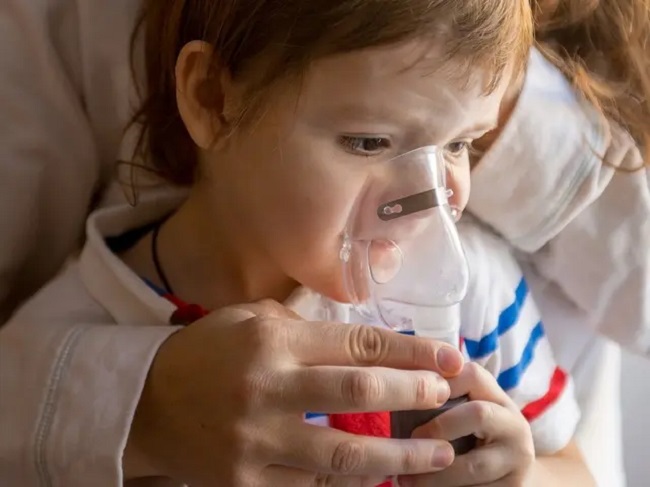Napa, CA – A rising tide of vaccine-preventable diseases is sweeping across the United States, with measles and pertussis (whooping cough) making a concerning return. As vaccine hesitancy grows and vaccination rates decline, experts warn that these outbreaks could signal a larger public health crisis.
In a recent report, investigative journalism site ProPublica highlighted how the ongoing measles outbreaks—along with a significant spike in whooping cough cases—serve as a “canary in the coal mine,” signaling the dangers of decreasing vaccination coverage. Both diseases, which can be prevented through vaccination, have seen worrying increases, and experts are sounding the alarm.
Measles and Pertussis Surge Across the Nation
Measles cases have surged in 2024, with more than 800 confirmed cases in 10 separate outbreaks so far. This increase comes after several years of relatively low cases, yet the disease continues to present a serious public health threat. According to the Centers for Disease Control and Prevention (CDC), 94 percent of the cases this year are part of outbreaks, underlining the contagious nature of the disease. Outbreaks have been confirmed in 25 states, including major jurisdictions such as California, Florida, and New York.
But it’s not just measles that’s making a comeback. Pertussis, or whooping cough, is also on the rise. The CDC reports that pertussis cases have increased by over 1,500 percent since the record lows during the COVID-19 pandemic. Pertussis is particularly dangerous for infants, causing severe coughing fits, pneumonia, pauses in breathing, and even brain damage. Tragically, the disease has led to fatalities. Between January and October of 2024 alone, California reported over 2,000 cases, including one infant death. Nationally, at least 10 deaths from pertussis were recorded last year.
Vaccine Hesitancy and Declining Immunization Rates
The ProPublica report emphasizes that the resurgence of these diseases is closely linked to declining vaccination rates. In 2023, measles vaccination rates fell below the herd immunity threshold in 39 states, leaving many communities vulnerable to outbreaks. While California’s vaccination rates remain relatively stable, other states have seen significant declines, and these pockets of lower vaccination coverage have proven to be hotspots for disease transmission.
Pertussis vaccination rates, too, have dropped nationally between 2013 and 2023, with similar consequences. Public health experts are increasingly concerned that lower immunization rates will lead to more widespread outbreaks, not just of measles and pertussis, but of other vaccine-preventable diseases as well.
Dr. Adam Ratner, a pediatric infectious disease specialist based in New York City, described the situation as a “bright-red warning light.” He stressed that these outbreaks are not isolated incidents but part of a larger, troubling trend. “It’s not just measles,” Ratner said. “We are seeing more and more preventable diseases that have long been under control making a comeback.”
The Risk to Vulnerable Populations
The consequences of these outbreaks are particularly devastating for young children, infants, and those with weakened immune systems. Pertussis, for instance, is life-threatening for infants, who are often too young to be fully vaccinated. The disease can cause severe complications, including brain damage and death. The recent infant death in California, coupled with other deaths across the country, underscores the deadly potential of pertussis in unvaccinated populations.
In fact, Dr. Anna Durbin, a professor at Johns Hopkins Bloomberg School of Public Health, warned that the rising number of cases of both diseases could lead to more preventable deaths. “This is a clear and avoidable public health tragedy,” Durbin said. “If vaccination rates do not improve, we will likely see more deaths and widespread suffering.”
The Road Ahead: Urgent Call for Increased Vaccination
Public health experts agree that the current situation is entirely preventable through better vaccination efforts. While California has so far avoided the worst of the outbreaks, the situation in other states serves as a stark reminder of the potential for widespread harm if vaccine coverage continues to slip.
Experts are calling for renewed efforts to educate the public about the importance of vaccines, as well as more robust outreach in communities with lower vaccination rates. The focus must also be on ensuring that vulnerable populations, such as infants and immunocompromised individuals, are protected from these preventable diseases.
As Dr. Ratner concluded, “The warning signs are here. It’s up to us to respond before it’s too late.”
With cases of measles and pertussis on the rise, the need for widespread vaccination has never been more urgent. If vaccination rates do not improve, the U.S. could face a larger public health crisis, one that could lead to more illness, hospitalization, and even death, all from diseases that are preventable with a simple shot.

